10 Most Sustainable Base Layer Brands: The Conscious Consumer’s Guide
Affiliate Disclosure
Hey fellow impactful ninja ?
You may have noticed that Impactful Ninja is all about providing helpful information to make a positive impact on the world and society. And that we love to link back to where we found all the information for each of our posts.
Most of these links are informational-based for you to check out their primary sources with one click.
But some of these links are so-called "affiliate links" to products that we recommend.
Why do we add these product links?
First and foremost, because we believe that they add value to you. For example, when we wrote a post about the environmental impact of long showers, we came across an EPA recommendation to use WaterSense showerheads. So we linked to where you can find them. Or, for many of our posts, we also link to our favorite books on that topic so that you can get a much more holistic overview than one single blog post could provide.
And when there is an affiliate program for these products, we sign up for it. For example, as Amazon Associates, we earn from qualifying purchases.
What do these affiliate links mean for you?
First, and most importantly, we still only recommend products that we believe add value for you.
When you buy something through one of our affiliate links, we may earn a small commission - but at no additional costs to you.
And when you buy something through a link that is not an affiliate link, we won’t receive any commission but we’ll still be happy to have helped you.
What do these affiliate links mean for us?
When we find products that we believe add value to you and the seller has an affiliate program, we sign up for it.
When you buy something through one of our affiliate links, we may earn a small commission (at no extra costs to you).
And at this point in time, all money is reinvested in sharing the most helpful content with you. This includes all operating costs for running this site and the content creation itself.
What does this mean for me personally?
You may have noticed by the way Impactful Ninja is operated that money is not the driving factor behind it. It is a passion project of mine and I love to share helpful information with you to make a positive impact on the world and society. However, it's a project in that I invest a lot of time and also quite some money.
Eventually, my dream is to one day turn this passion project into my full-time job and provide even more helpful information. But that's still a long time to go.
Stay impactful,
Amid growing concerns about the textile industry’s environmental impact, there is pressure to find greener clothes for your wardrobe, from outerwear to base layering. Unfortunately, fashion greenwashing makes it harder for you and all other consumers to figure out which clothing brands offer the most eco-friendly garments. So, we had to ask: Which are the most sustainable base layer brands?
The most sustainable base layer brands are Patagonia, Finisterre, and VAUDE which prioritize low-impact and high-performing materials while striving for circularity. In addition, Duckworth and Nui Organics produce long-lasting products and keep their supply chain relatively short.
Whether you are searching for base layers that prioritize warmth or breathability to add to your wardrobe without negatively impacting the soil, the water, the animals, and other people, there is a brand for you. So, let’s keep reading to learn more about the most sustainable base layer brands and how they ensure sustainable, ethical practices.
Here’s How We Selected the Most Sustainable Base Layer Brands
The base layer you typically wear to keep yourself warm during winter outdoor activities can be a higher-impact and less sustainable clothing item because it uses synthetic fabrics to meet function requirements.
“Sustainable: The ability to be maintained at a certain rate or level | Avoidance of the depletion of natural resources in order to maintain an ecological balance”
Oxford Dictionary
The brands on this list were chosen based on their commitment and actions to promote sustainable practices while reducing the environmental impacts of the textile industry.
They are transparent about their materials, processes, and workforce management within their supply chain.
Some brands focus their efforts on reducing waste and optimizing natural resources while others strive to reduce the carbon footprint of their clothes.
All of these brands share the commitment to reshape the textile industry toward a more sustainable and Earth-friendly sector.
These Are the 10 Most Sustainable Base Layer Brands
Most Sustainable Base Layer Brands
Overall, these base layer brands are sustainable. Yet, they take various approaches to reduce environmental impacts and uphold ethical standards. Let’s dive into each brand and find out more.
Patagonia: Everyday Wear for Those Who Care


“Together, we can prioritize purpose over profit and protect this wondrous planet, our only home.”
Patagonia
🌎
How do they ensure their sustainability?
Patagonia puts sustainability at the center of their operation.
- They work to reduce, rather than simply offset, carbon emissions where it matters the most: in the supply chain and material manufacturing. They reduce their carbon footprint by removing high-impact virgin fossil-based fibers from their collections, using “Environmental Profit and Loss” to guide their production decision, and helping their suppliers to cut emissions. For example, Patagonia’s fall 2023 collection was made up mostly of preferred materials (91% by fabric weight), including Regenerative Organic Certified fibers, hemp, man-made cellulose fibers, recycled cotton, and recycled polyester.
- On top of that, Patagonia’s Worn Wear Program encourages customers to repair and recycle their products, extending the textile lifecycle and reducing waste.
- Lastly, Patagonia is certified as a B Corporation and a Bluesign® brand.
🌐
How do they ensure their ethics?
Patagonia commits to fair trade practices. Through the partnership with Fair Trade USA, they currently produce 86% of their clothes in 20 Fair Trade Certified™ factories.
- Patagonia pays a premium for every item produced in such factories, accumulating in a fund for workers to use in their chosen community projects, whether in healthcare or parent support or to withdraw as a cash bonus.
- Additionally, they have various social responsibility programs to prevent harm and create positive impacts on the lives of apparel workers in their supply chain. These include the Fair Labor Association, the Living Wage Program, the Migrant Workers Program, and the Responsible Purchasing Practices.
- Patagonia is also fully transparent about the locations of their facilities and suppliers.
🤝
Are they part of any giving-back programs?
Since 1985, Patagonia has pledged 1% of sales annually to environmental causes. They have awarded over $89 million in cash and kind donations to domestic and international grassroots environmental groups, making a difference in their local communities. In 2022, the founder of Patagonia gave away his family’s ownership of the company to the newly created Patagonia Purpose Trust and the not-for-profit organization Holdfast Collective, ensuring that all future profits from the company are used to fight the climate and extinction crisis.
🛍️
What is their product range?
- Best for: kidswear, menswear, womenswear
- Product range: base layers, shirts, pants, jackets, blazers, hoodies, sweatshirts, T-shirts, shorts, plus-size
- Price range: $$$
- Size range: XXS–XXXL
Finisterre: Ocean-Inspired Sustainable Outdoor Gear Made Ethically


“Yet from our cliff top workshop, we stay true to our original design ethos of functionality and sustainability, remaining committed to product, environment and people.”
Tom Kay, Founder of Finisterre
🌎
How do they ensure their sustainability?
Finisterre places circular sourcing at the center of their sustainability commitment.
- They use renewable and recyclable textiles, as well as biodegradable natural fibers and finishes. At least 50% of their clothes are made using recycled fabrics. For example, in 2022, 87% of the synthetic polymer fabrics used in Finisterre clothes were made using recycled fabrics, including polyester recovered from post-consumer and post-industrial waste. They also use low-impact natural fibers, including GOTS-certified organic cotton, hemp, linen, and bamboo.
- In 2019, they replaced all plastic packaging with water-soluble, ocean-safe, and biodegradable “Leave No Trace” garment bags. Finisterre also strives to reduce textile waste by offering repair services and giving in-store credits for gear trades-in, which would be reconditioned for resale.
- On top of that, they implement various incentives to reduce their carbon footprint, including switching more of their stores and offices to renewable energy tariffs and transporting products using less carbon-intensive modes on land and sea.
- Last but not least, Finisterre is a B Corporation.
🌐
How do they ensure their ethics?
Finisterre is committed to full transparency in their supply chain, holding their partners to the high standards in their Code of Conduct and their Anti-Slavery & Trafficking Policy.
- Additionally, they partner with Fair Working Conditions (FWC), enabling the mapping of their supply chain, the screening of suppliers, and targeted audits at high-risk locations.
- Their facilities are also listed on Open Supply Hub.
- Lastly, Finisterre’s ethical values extend to their dedication to saving the sea. For example, they provide a free resource to inspire ocean activism.
🤝
Are they part of any giving-back programs?
Finisterre provides financial support to various giving-back campaigns and programs through the Finisterre Foundation, championing ocean access for all. For example, Finisterre turned 2021’s Black Friday into Blue Friday, where they swapped discounts for donations, raising funds for The Wetsuit Project, which adapts wetsuits for children and adults with various disabilities to access the sea. In 2022, Blue Friday was used again to raise money supporting Level Water in order to provide specialist swimming lessons for children with disabilities. Other projects include The Seasuit Project, City Kids Surfing, Seasuit Donation, and Art Auctioning for Good.
🛍️
What is their product range?
- Best for: menswear, womenswear
- Product range: shirts, pants, tops, sweaters, dresses, hoodies, shorts, denim, swimwear, jackets, blazers, sweatshirts, T-shirts, base layers, socks, shorts,
- Price range: $$
- Size range: XS–XXL
VAUDE: Outdoor Gear and Activewear Where Performance Meets Ecology


“We design with a focus on minimal material consumption, try to avoid waste and design products that are timeless, durable and repairable.”
VAUDE
🌎
How do they ensure their sustainability?
VAUDE prioritizes sustainability by creating a counterbalance to resource-consuming lifestyles.
- They achieve that by making durable and versatile products for life, minimizing waste during manufacturing, and enabling longer product lifespan with maintaining, repairing, donating, and upcycling guidance. VAUDE opts for materials that combine technical performance and ecological responsibility. An example of this is their use of merino wool, a natural fiber suitable for a warm and water-repellent protective layer that is ideal for mountain sports.
- Meanwhile, they lower the impact of this fabric by adhering to the Responsible Wool Standard and the Global Organic Textile Standard for virgin organic wool and increasing the content of GRS-certified recycled wool in their collection. Furthermore, their products have been certified by Bluesign® and Green Button.
- Regarding their impact, the brand sets science-based climate goals to reduce global emissions as quickly as possible, aligning with the Paris Agreement’s 1.5 degrees in global warming, and is on track with their target as of October 2022, according to Science Based Targets (SBTi). They achieved that by measuring their total carbon footprint and implementing reduction measures in hotspots like material, energy, and transport. Since the beginning of 2022, VAUDE has been a carbon-neutral company, achieved through fully offsetting their global greenhouse gas emissions in the My Climate’sclimate change mitigation project in Vietnam, their most important country of production.
🌐
How do they ensure their ethics?
VAUDE ensures ethical practices for both humans and animals involved in their operation.
- They work with the Fair Wear Foundation to monitor their final stage of production, ensuring safe working conditions and fair wages for factory workers. They also audit 100% of their producers in high-risk countries.
- Additionally, VAUDE has a basic policy to support diversity and inclusion in their direct operations and supply chain.
- Regarding animal rights, they follow the Responsible Wool Standard, appropriately addressing sheep’s welfare and the land they graze on.
🤝
Are they part of any giving-back programs?
VAUDE donates the products that can’t be repaired but are still perfectly functional to FairWertung. In 2021, VAUDE donated products with a merchandise value of approximately €339,000 (approximately $375,000 USD) to the network, which makes clothes affordable via charity shops or second-hand stores.
🛍️
What is their product range?
- Best for: sportswear (cycling, hiking, skiing) and urban outdoor clothes for women, men, and kids
- Product range: jackets, hoodies, sweaters, shirts, vests, pants, shorts, skirts, functional underwear
- Price range: $$$
- Size range: XS–XXXL
Duckworth: Sheep to Shelf™ US-Made Merino Outdoor Clothing for a Mountain Lifestyle

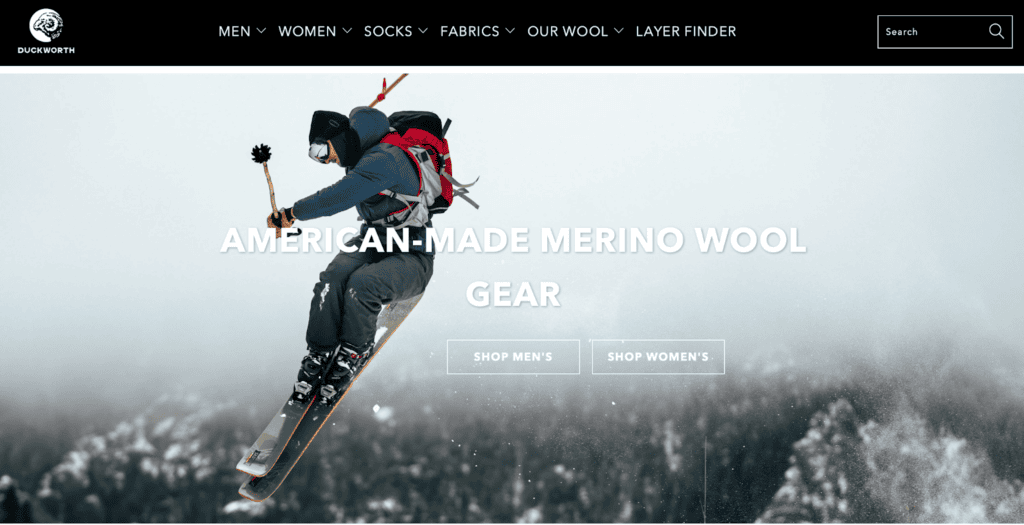
“Our clothes are built to last and perform, tapping sustainable fibers and low-impact processes right here in the US – a combination of ethical practices even our competitors in the Merino Wool space simply can’t match.”
Duckworth
🌎
How do they ensure their sustainability?
Duckworth promotes sustainability by making durable and versatile outdoor apparel using merino wool.
- They source these soft and breathable fibers from the Helle Rambouillet sheep—a close cousin to merino sheep—that roam wildly in the founders’ ranch. The ranch lies from 5,000′ to 9,000′ elevation in the Northern Rockies of Montana, where the conditions are just right for their herd to grow exceptionally soft wool.
- At Duckworth, not only the sourcing stage but the entire process happens in the US, from sheep ranching to wool processing, yarn spinning, fabric milling, and finishing, altogether reducing the carbon footprint of transportation.
🌐
How do they ensure their ethics?
Duckworth is completely transparent about their supply chain from beginning to end. In particular, while Duckworth owns their sheep, they let them roam free as wild animals, coming in contact with humans a few days per year when they’re shaved for the summer months.
🤝
Are they part of any giving-back programs?
Duckworth, in an effort to strengthen the US wool industry, has joined up with their merino wool producer, Helle Rambouillet, to donate $50,000 to build a new Montana Wool Lab at Montana State University. This marks one of only two wool research and service laboratories in the entire US.
🛍️
What is their product range?
- Best for: menswear, womenswear
- Product range: tops, bottoms, sweatshirts, hoodies, jackets, vests, base layers, socks, accessories
- Price range: $$$
- Size range: XS–XXL
Nui Organics: Putting People and the Planet First
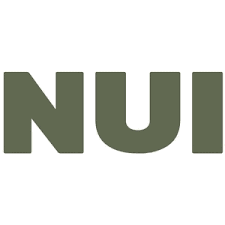
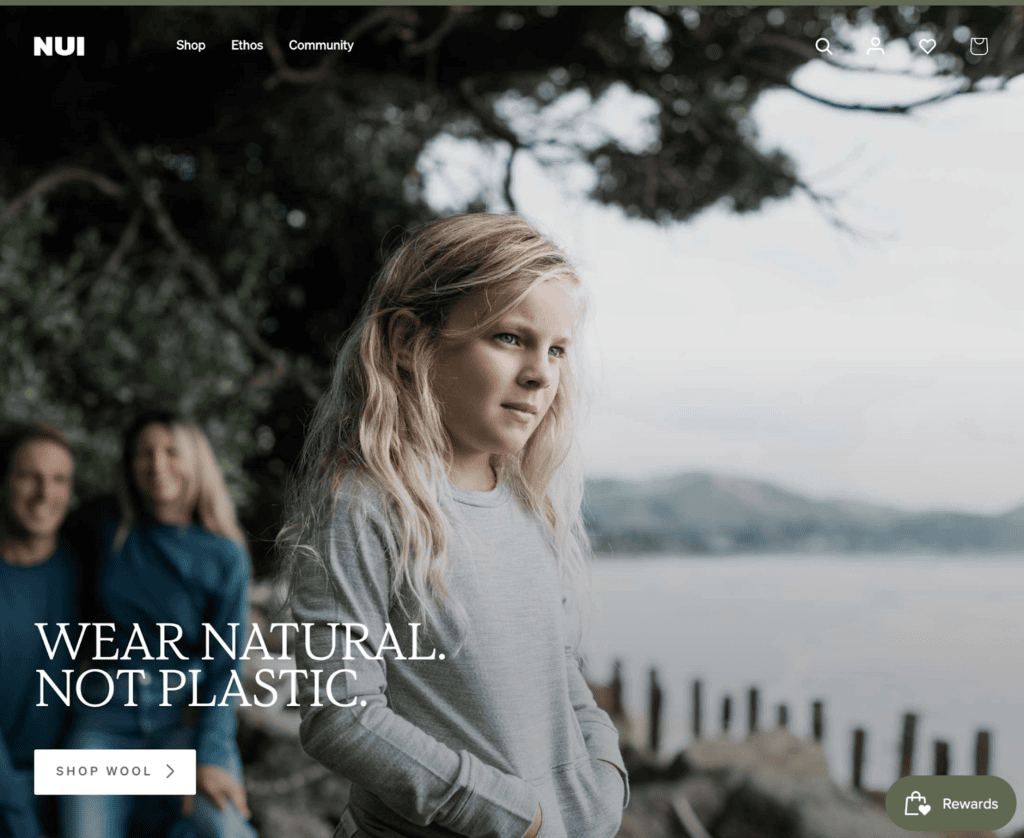
“We create high-quality, low-impact apparel in timeless, long-lasting styles using only sustainable materials and an ethical supply chain.”
Nui Organics
🌎
How do they ensure their sustainability?
Nui Organics approaches sustainability by making long-lasting products with natural materials.
- They use blends of natural fibers, including GOTS-certified organic merino wool, alpaca wool, silk, and GOTS-certified organic cotton.
- Additionally, they have OEKO-TEX® Standard 100 certification, guaranteeing no harmful substances are found in their textile materials. Regarding the manufacturing process, Nui Organics lowers their environmental impacts by relying on renewable energy and integrated processes in manufacturing, using low-impact, non-toxic dyes in most of their products, avoiding harsh chemicals in fabric treatment (for example, no chlorine in merino wool treatment), and treating wastewater the standard of OEKO-TEX® Detox to Zero. They are also certified by Bluesign® for sustainable manufacturing.
- Furthermore, Nui Organics is a part of the Responsible Packaging Movement, actively eliminating single-use plastic and virgin forest fiber from packaging. Their newest collections are delivered in FSC-certified 100% recyclable paper bags.
- Lastly, they run the (re) Nui platform, where customers can buy and sell pre-loved Nui garments to keep them in circulation, reducing waste and bettering the planet.
🌐
How do they ensure their ethics?
Nui Organics works exclusively with factories that share their commitment to ethics and sustainability, both for the environment and for society.
- Their suppliers are also certified by GOTS, OEKO-TEX®, Bluesign®, SA 8000, and SEDEX adhering to ethical practices and improving working conditions.
- Finally, Nui Organics traces and audits most of their partners in the supply chain.
🤝
Are they part of any giving-back programs?
Nui Organics is not known to be part of any giving-back programs.
🛍️
What is their product range?
- Best for: womenswear, menswear, kidswear
- Product range: sweaters, knitwear, tops, blouses, T-shirts, socks, stockings, tights, accessories
- Price range: $$
- Size range: XS–XXL
Paka: Outdoor Clothing Made With Traceable Alpaca Wool


“Paka was created to bring you closer to where your clothing comes from, what it’s made of, and who made it.”
Paka
🌎
How do they ensure their sustainability?
Paka prioritizes sustainability by innovating and making low-impact, high-performing fabrics with ethical alpaca wool.
- In particular, they source alpaca wool from small-scale, family-owned herds. Each herd contains 60 to 90 animals roaming free throughout the Peruvian Andean Highlands. After the fleece is shorn, the fiber is collected and separated by hand before being colored (if needed) with environmentally friendly dyes certified by OEKO-TEX® and GOTS. Half of the energy used in their alpaca wool spinning process comes from solar energy.
- Further down the life-cycle in the transporting stage, Paka alpaca products are delivered carbon-neutral through their partnership with Ecocart. The packaging is also fully biodegradable.
🌐
How do they ensure their ethics?
Paka ensures their ethics by making their alpaca wool products fully traceable, from free-roaming alpacas up in the Andes Mountains to customers’ homes in the US.
- The 100+ Quechua women weavers who make Paka’s products are employed by the brand and paid 4 times the family living wage.
- Regarding alpaca treatment, Paka uses a special technique (Inca Esquila) to minimize the time and stress posed upon the animal during the shearing process.
🤝
Are they part of any giving-back programs?
Through their partnership with Peruvian Hearts, Paka supports the education of underprivileged Peruvian young women with 1% of their annual revenues. Another 1% of their sales supports regenerative agriculture and alpaca families. Additionally, they provide free weaving training for women who want to learn a skill, as well as a “Wawa Wasi” (daycare) in the neighborhood, with full-time supervision and a trained psychologist to enable mothers to go to work. Lastly, Paka is helping to build an NGO that preserves the Inca traditions.
🛍️
What is their product range?
- Best for: women’s and men’s knitwear
- Product range: jackets, sweaters, hoodies, baselayer, T-shirts, joggers, socks, underwear, accessories
- Price range: $$$
- Size range: XXS–XXL
BAM: Performance Clothing Made Sustainable From Natural Fibers


“Transparency is an essential part of reducing our impact because it lets you hold us to account and make sure we do exactly what we’ve said we would. And you can make informed choices about the clothes you wear – you can see the impact of every item of our clothing on our website.”
BAM
🌎
How do they ensure their sustainability?
BAM ensures sustainability by sourcing low-impact textile and packaging materials, adhering to responsible production with zero discharge of hazardous chemicals, and striving for circularity.
- Firstly, they prioritize bio-based fibers like man-made cellulose fibers from bamboo, organic cotton certified with GOTS or OCS, and RWS-certified wool responsibly sourced from yak and sheep. In 2022, 95% of the fibers they used were bio-based, organic, or recycled. Furthermore, the brand has removed all conventional plastic from the packaging since 2020. Instead, they use compostable bags that can either break down in a garden compost or be recycled in an industrial facility.
- Secondly, they ensure safe production, especially for chemical-intensive fabrics like bamboo viscose. Their viscose suppliers ranked joint 3rd best on the Canopy Hot Button Index, have the highest level of OEKO TEX® STeP certification, and are engaged with the Zero Discharge of Hazardous Chemicals Foundation MMCF module.
- Thirdly, they enable circularity in textiles by prioritizing making garments with just one stream of textile (synthetic or natural) and partnering with a textile recycler to make the 73 Zero range (73 Zero Jackets and 73 Zero Jeans), which are certified recyclable by the Circular Textiles Foundation. Additionally, they offer a free take-back scheme to recycle textile waste at the end of their life.
- Last but not least, BAM is committed to the goal of removing more carbon dioxide than they create. They achieve that by using less energy and reducing the use of fossil fuels as fast and as much as possible to cut down their emissions while promoting carbon removals with the choice of natural raw materials, especially bamboo, that suck CO₂ out of the air and store it in the soil, roots, forests, and fibers. They work with Green Story, too, which helps to measure the impact of their products and communicate the savings for their clothes compared to conventionally made products.
🌐
How do they ensure their ethics?
BAM ensures their ethics by committing to total transparency, specifically mapping their supply chain and measuring their product life-cycle emissions.
- They trace most of their supply chain and uphold their suppliers to a Code of Conduct that covers four of the ILO’s Fundamental Principles and Rights at Work.
- Their entire final production stage and most of their first and second stages are certified by the Fair Wear Foundation. Additionally, the brand commits to protecting ancient and endangered forests through packaging and sourcing fiber under Canopy Style.
- Regarding animal rights, they source merino wool certified by Responsible Wool Standard, ensuring the animal’s well-being.
🤝
Are they part of any giving-back programs?
BAM partners with Sharewear to support the organization’s mission to eliminate clothing poverty and reduce clothing waste in the UK. In 2022, they offered customers a postage-paid donation bag at checkout, leading to over 4,000 kgs of high-quality clothing being donated throughout the year. Additionally, they partially fund, donate materials, and provide access to their industrial network and processes to support research into a new bio-based approach to textile recycling.
🛍️
What is their product range?
- Best for: menswear, womenswear
- Product range: crop tops, vests, camis, short sleeve tops, long sleeve tops, base layers, fleeces, sweat tops, hoodies, sweaters, knitwear, shorts, pants, leggings, pajamas, denim jeans, gilets, jackets, waterproof outerwear, insulated jackets, running jackets, socks, underwear, accessories
- Price range: $$
- Size range: S–XXL
Houdini: Function-Focused Outdoor Clothing Made With a Circular Design Philosophy


“Our designs are minimalistic and stripped from unnecessary details, just like nature itself. The result is beautiful aesthetics, a longer product lifetime and easy repairs.”
Houdini
🌎
How do they ensure their sustainability?
Houdini ensures their sustainability by producing versatile, long-lasting, and circular garments.
- Firstly, they design versatile products to enable a smaller and smarter wardrobe for end users, reducing their overall impact on natural resources.
- Secondly, they strive to give their garments a long lifespan by innovating materials, employing minimalistic, easy-to-repair designs, assisting with proper garment care, and providing repair service. Specifically, 100% of all the fabrics they used in their winter 2023 collection were recycled, recyclable, renewable, biodegradable, or Bluesign® certified.
- Lastly, they facilitate reusing, recycling, or composting of their garments at the end of their life. To enable recycling, they don’t mix synthetic fibers with natural fibers, as this ensures their garments can be recycled (or biodegraded). As well, all their base layers made with natural fibers—merino wool and TENCEL™ regenerated cellulose fibers—can be composted. Speaking of their winter 2023 collection, 85% of it was also made from fully circular materials. Beyond design philosophy, Houdini prioritizes chemical reduction. The brand opts for low-impact, toxic-free treatments for certain functional garments to ensure their performance without increasing the environmental impact of using harsh chemicals. They also apply anti-odor treatments on garments like base layers that aren’t made with merino wool. On the other hand, they treat their outerwear garments for water resistance using durable organic water repellent instead of PFAS.
🌐
How do they ensure their ethics?
Houdini partly traces their supply chain and discloses the lists of their producers and fabric suppliers on their website.
🤝
Are they part of any giving-back programs?
Houdini is not known to be part of any giving-back programs.
🛍️
What is their product range?
- Best for: womenswear, menswear, kidswear
- Product range: jackets, sweaters, hoodies, middle layers, fleeces, pants, base layers, shirts, tops, shorts, skirts, dresses, underwear accessories
- Price range: $$$
- Size range: XXS–XXL
Vollebak: Clothes From the Future
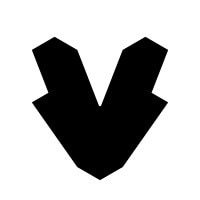
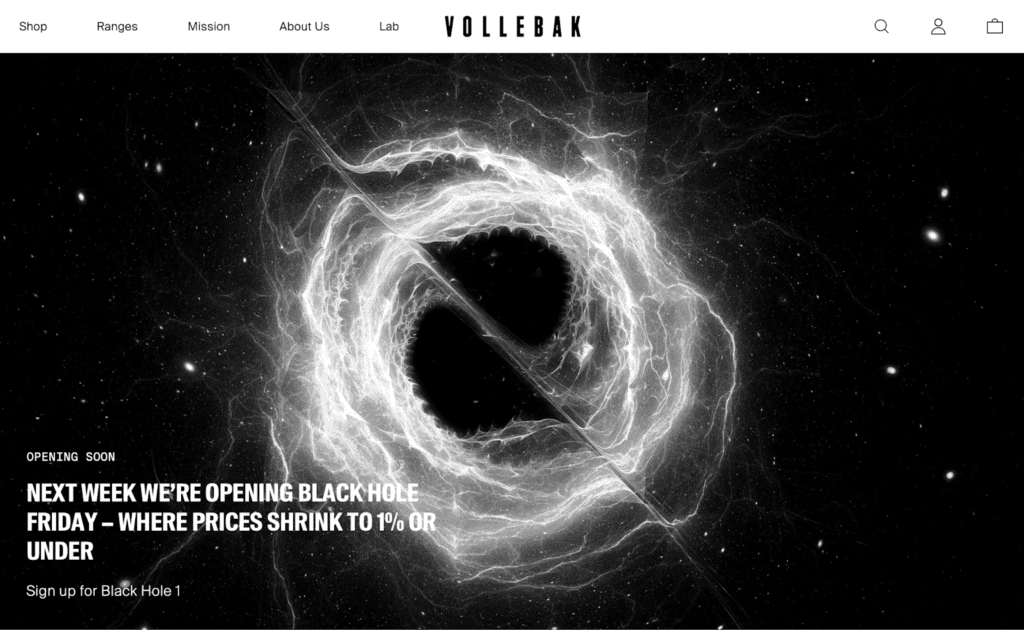
“We’re heading into a world of climate change, resource scarcity, disease spreading around the world and space colonisation. We look around and wonder, why is no-one else designing for this.”
Vollebak
🌎
How do they ensure their sustainability?
Vollebak ensures sustainability by designing innovative, long-lasting clothes for a future of resource scarcity and extreme weather conditions. They implement their design philosophy in three collections representing three sustainability solutions.
- Firstly, Vollebak uses animal and plant-derived fibers to make clothes that require as little energy as possible and leave no trace of their existence at the end of their lives. For example, they combine algae, which produce 50–80% of the oxygen on our planet, with materials like wood pulp and hemp fiber to create biodegradable clothes with a bioengineered black color. On that note, their black algae range uses no synthetic carbon black ink.
- Secondly, they reuse waste to make clothes in their Garbage collection. For example, Vollebak produces fire-resistant sweaters from old bulletproof vests and firefighter suits that were destined to spend the next few centuries in a landfill.
- Lastly, they innovate in material technology to make clothes with a longer life expectancy than the people wearing them. Finally, their 100 Year pants, hoodies, and sweaters are designed to resist fire, wind, water, and, most importantly, time.
🌐
How do they ensure their ethics?
Regarding animal rights, Vollebak sources lambswool certified by Responsible Wool Standard and from mulesing-free merino sheep, ensuring the animal’s well-being.
🤝
Are they part of any giving-back programs?
Vollebak is not known to be part of any giving-back programs.
🛍️
What is their product range?
- Best for: menswear
- Product range: coats, jackets, fleeces, sweaters, knitwear, shirts, T-shirts, denim, pants, shorts, accessories
- Price range: $$$
- Size range: XS–XXL
Icebreaker: Performance Clothing Made With Traceable Merino Wool
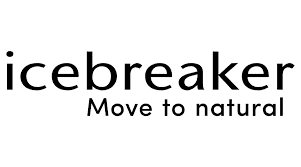
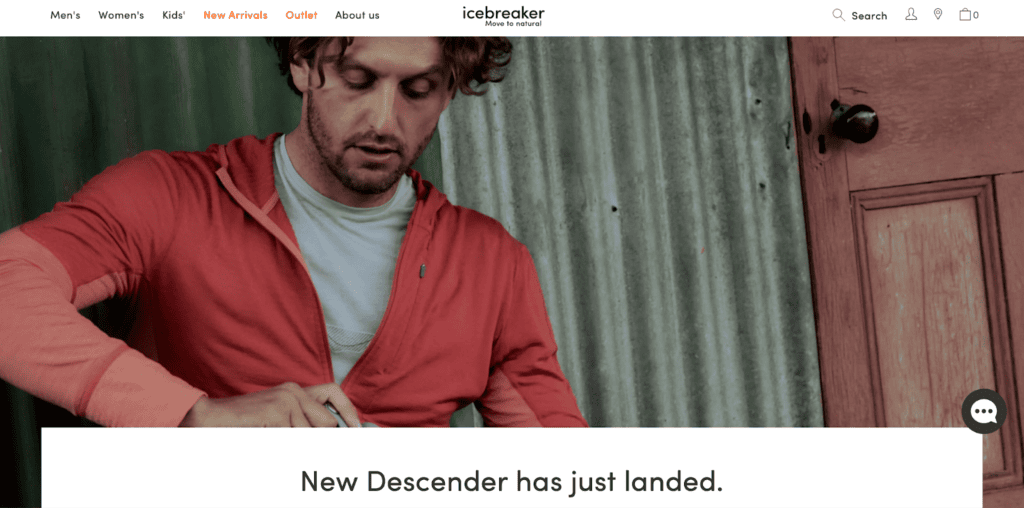
“We lead a movement towards a more natural way of living, by taking unnecessary plastic out of performance apparel.”
Icebreaker
🌎
How do they ensure their sustainability?
Icebreaker promotes sustainability by eliminating synthetic fibers in performance wear and sourcing natural fibers from regenerative farming systems.
- Only 3.86% of the fibers used in their 2023 collection were synthetic fabrics, of which 14% were bio-based instead of fossil-derived plastic. On the other hand, 96.14% of their 2023 collection was derived from natural fibers, predominantly traceable merino wool. Most of their base layers are made with 100% merino wool, as well, with a few exceptions based on a blend between merino wool and lyocell.
- To reduce their environmental impact, the brand prioritizes sourcing their merino wool from growers belonging to the ZQRX Program. This regenerative agriculture index helps farmers work with nature to continuously improve human, animal, and environmental outcomes.
- Furthermore, the brand provides guides to care for and use their merino wool garments, helping extend each item’s lifespan.
🌐
How do they ensure their ethics?
Icebreaker ensures their ethics by building strong partnerships with suppliers at all tiers of their global supply chain. In particular, they have 70 growers signing a long-term contract of 10 years with them. Regarding animal welfare, Icebreaker has a formal statement declaring the 5 freedoms of their flock:
- being free from hunger or thirst
- roaming in open pasture
- having adequate shade and shelter
- being out of harm’s way and from unnecessary pain or distress
🤝
Are they part of any giving-back programs?
Icebreaker is not known to be part of any giving-back programs.
🛍️
What is their product range?
- Best for: menswear, womenswear, kidswear
- Product range: underwear, base layers, T-shirts, hoodies, sweatshirts, knitwear, jackets, vests, pants, leggings, dresses, skirts, socks, accessories
- Price range: $$
- Size range: XS–XL
Why Is It Important to Buy Products Made of More Sustainable Fabrics
It is important to buy products made of more sustainable fabrics because a sustainable textile industry has a lower carbon footprint, helps save natural resources, and is better for forests, animals, and humans.
Buying Sustainable Fabrics Reduces Your Carbon Footprint
The production of clothing and footwear is estimated to contribute 10% of global greenhouse gas emissions—more than all international flights and shipping combined. If the fashion industry were a country, it would be the fourth largest emitter of carbon dioxide.
One way to reduce the carbon footprint of the clothes you buy is to opt for sustainable fabrics. Sustainable fabrics, which are often made with natural or recycled fibers, have relatively low carbon footprints compared to petroleum-based fabrics. For example, organic cotton made in the US has a carbon footprint of 2.35 kg CO2 (per ton of spun fiber)—a quarter of polyester’s carbon footprint.
Buying Sustainable Fabrics Reduces Demand For Natural Resources and Waste Management
The textile industry uses water and land to grow cotton and other fibers. It is estimated that 79 billion cubic meters of water were used for the sector worldwide in 2015. For example, producing a single cotton T-shirt requires as much water as one person drinks for 2.5 years (2,700 liters of fresh water).
Worse yet, the textile economy is vastly more linear than circular: the largest amount of resources used in clothes ended up in landfills (instead of being recycled to remake clothes). According to a report by the Ellen MacArthur Foundation,
- Less than 3% of materials used in the textile economy in 2015 came from recycled sources.
- In other words, more than 97% of resources used in making clothes are newly extracted.
When clothing items are disposed of within a short period of time—under a year in the case of half of the fast fashion clothes—the natural systems that provide raw materials for fabrics don’t have enough time to recover and regenerate, which could lead to ecological breakdown.
Sustainable fabrics are made with less water and emissions while lasting longer:
- Because they are durable, you don’t need to buy new clothes too often.
- Thus, you help reduce the pressure to extract more resources for making new items.
Similarly, making and consuming sustainable fabrics made with recycled materials reduces the demand for virgin materials while helping tackle waste management.
Buying Sustainable Fabrics Encourages Sustainable Management of Forests
Sustainable natural fiber fabrics are made with raw materials from forests and plantations that are sustainably managed, such as complying with FSC standards.
When you buy sustainable natural fiber fabrics, you discourage unsustainable forestry practices like illegal logging. You can help reduce deforestation, biodiversity loss, and the effects of climate change.
Buying Sustainable Fabrics Encourages Fairer Treatment of Animals
The fashion industry is rife with animal mistreatment when it comes to making animal-based fabrics like wool or silk. Every year, billions of animals suffer and die for clothing and accessories.
Buying sustainable vegan alternatives can help to reduce the pressure on raising more and more animals to meet the demand for animal-based fabrics while sacrificing their well-being and lives.
Suppose you have to buy fabrics made with, for example, wool or silk; make sure you only choose brands committed to cruelty-free products. In that case, you help advocate better treatments for animals raised within the textile industry.
Using Sustainable Fabrics Encourages Fairer Treatment of Textile Workers
Recent statistics from UNICEF estimated as many as 170 million child laborers worldwide, many of whom were engaged in some form of work in the textile industry. They don’t get paid minimum wages and often work long hours.
When you buy sustainable fabrics from brands transparent about the working conditions at their factories, you discourage the use of child labor and help promote better working conditions for textile workers.
How Can You Generally Buy More Sustainable Fabrics
The key to sustainably buying fabrics is to check on relevant environmental and original certifications.
For natural fabrics:
- Global Organic Textile Standard (GOTS): A globally recognized certification system that ensures a certain threshold of organic content has been met. It covers manufacturing, packaging, labeling, transportation, and distribution (but not what happens in the fields where crops are grown).
- USDA Certified Biobased Product: The USDA BioPreferred® Certification is a voluntary certification offered by the United States Department of Agriculture. The certification identifies products made from plants or other renewable materials.
- Ecolabel: Ecolabel is the official European Union voluntary label recognized worldwide for certified products with a guaranteed, independently verified low environmental impact. The label requires high environmental standards throughout the entire life-cycle: from raw material extraction through production and distribution to disposal. It also encourages companies to develop innovative, durable, easy-to-repair, and recyclable products.
For natural fiber semi-natural/semi-synthetic fabrics:
- Forest Stewardship Council: An FSC certification ensures that the wood (or wood-like material) comes from responsibly managed forests that provide environmental, social, and economic benefits.
There are two types of FSC Certification:- FSC Forest Management Certification, with a focus on the origin of the wood—the forest.
- FSC Chain of Custody Certification, which focuses on the path from the forest to the customer’s home.
- Program for Endorsement of Forest Certification: PEFC’s approaches to sustainable forest management are in line with protecting the forests globally and locally and making the certificate work for everyone. Getting a PEFC certification is strict enough to ensure the sustainable management of a forest is socially just, ecologically sound, and economically viable but attainable not only by big but small forest owners.
For recycled fabrics:
- Recycled Claim Standard (RCS): The Textile Exchange RCS was originally developed as an international, voluntary standard that sets requirements for third-party certification of Recycled input and chain of custody.
- The Global Recycled Standard (GRS): The Global Recycled Standard (GRS) is an international, voluntary, full product standard that sets requirements for third-party certification of Recycled Content, chain of custody, social and environmental practices, and chemical restrictions. It can be used for any product with more than 20% recycled material.
For all types of fabrics:
- STeP by OEKO-TEX®: STeP by OEKO-TEX® is an independent certification system for brands, retailers, and manufacturers from the textile and leather industry. It communicates organizational environmental measures, including reducing carbon footprint and water usage.
- OEKO-TEX® STANDARD 100: OEKO-TEX® labels aim to ensure that products pose no risk to human health (i.e., containing banned chemicals).
Some certifications that are signaling brands’ efforts toward lowered environmental impacts and a circular economy are:
- B Corp Certification: The label B Corp is a certification reserved for for-profit companies. Certified holders are assessed on their social and environmental impacts.
- Cradle2Cradle certification: Cradle2Cradle provides a standardized approach to material circularity. It assesses whether products have been suitably designed and made with the circular economy in mind covering five critical categories: material health, material reuse, renewable energy and carbon management, water stewardship, and social fairness.
Final Thoughts
Base layers can be one of the higher-impact and less sustainable clothing items because of the use of synthetic fabrics to meet function requirements. Thus, it is important to shop with ethics and sustainability in mind when choosing your next base layer.
By purchasing base layers from brands that commit to sustainability, you support their mission to create a fairer and less harmful textile industry for all lives on Earth.
Here is the list (again) of the most sustainable base layer brands:
- Patagonia
- Finisterre
- VAUDE
- Duckworth
- Nui Organic
- Paka
- BAM
- Houdini
- Vollebak
- Icebreaker
To make your use of these clothing items even more sustainable, follow these steps:
- Buy second hand, recycled or upcycled base layers made with low-impact materials.
- Keep your base layers for as long as possible.
- At the end-of-life of your base layers, upcycle the materials to extend their usage and arrange for them to be recycled or properly disposed of.
Stay impactful,

Sources
- Impactful Ninja: How Sustainable Are Synthetic Fabrics? A Life-Cycle Analysis
- Patagonia: Home
- Finisterre: Home
- VAUDE: Home
- Duckworth: Home
- Nui Organics: Home
- Paka: Home
- BAM: Home
- Houdini: Home
- Vollebak: Home
- Icebreaker: Home
- Patagonia: Base Layers
- Good On You: The Ultimate Guide to More Ethical and Sustainable Activewear
- Patagonia: The Climate Crisis Is Our Business
- Patagonia: The Climate Crisis Is Our Business | No More Virgin Petroleum Fibers by 2025
- Patagonia: The Climate Crisis Is Our Business | Is Each Product Worth the Environmental Cost?
- Patagonia: The Climate Crisis Is Our Business | Help Suppliers Cut Emissions
- Patagonia: Environmental Responsibility
- Patagonia: Regenerative Organic Certified fibers
- Patagonia: Hemp
- Patagonia: Man-made Cellulose Fibers
- Patagonia: Recycled Cotton
- Patagonia: Recycled Polyester
- Patagonia: WORN WEAR
- B Corporation: Patagonia
- Bluesign: Home
- Fair Trade: Home
- FAIR TRADE CERTIFIED: Improving Lives, Protecting the Planet.
- Patagonia: Social Responsibility
- Patagonia: Fair Trade
- Patagonia: Fair Labor Association
- Patagonia: Living Wage Program
- Patagonia: Migrant Workers Program
- Patagonia: Responsible Purchasing Practices
- Patagonia: Where We Do Business
- Patagonia: 1% for the Planet
- Forbes: Yvon Chouinard And The Patagonia Purpose Trust— What Is It And Will It Work?
- Fast Company: Patagonia uses capitalism to save the planet with the Holdfast Collective
- The New York Times: Patagonia Founder Gives Away the Company to Fight Climate Change
- Finisterre: Men’s Thermal Base Layers and Underwear
- Finisterre: Women’s Merino Base Layers and Bamboo Underwear
- Finisterre: Fabric of Finisterre
- Finisterre: Recycled Fabrics
- Impactful Ninja: How Sustainable Are Recycled Fabrics? A Life-Cycle Analysis
- Global Organic Textile Standard (GOTS): Home
- Impactful Ninja: How Sustainable Are Organic Cotton Fabrics? A Life-Cycle Analysis
- Impactful Ninja: How Sustainable Are Hemp Fabrics? A Life-Cycle Analysis
- Impactful Ninja: How Sustainable Are Linen Fabrics? A Life-Cycle Analysis
- Impactful Ninja: How Sustainable Are Bamboo Fabrics? A Life-Cycle Analysis
- Finisterre: Impact Reports
- Finisterre: Repair Workshop
- Finisterre: Finisterre x RESKINNED | REPURPOSING OLD GEAR FOR NEW ADVENTURES
- Finisterre: POSITIVE IMPACT REPORT 2022
- B Corporation: Finisterre
- Finisterre: Finisterre – A Positive Impact Business
- Finisterre: Anti-Slavery and Trafficking Policy
- Fair Working Conditions (FWC): Home
- Finisterre: Factories of Finisterre
- Open Supply Hub: Home
- Finisterre: Sea7 | The Materclasses
- Finisterre Foundation CIC: Grant Making Policy
- Finisterre: Finisterre Foundation | The Wetsuit Project
- Level Water: Home
- Finisterre: Finisterre Foundation | The Seasuit Project
- Finisterre: Finisterre Foundation | City Kids Surfing
- VAUDE: Functional underwear for men
- VAUDE: Functional underwear for women
- VAUDE: CSR Report | Produce Philosophy
- Good On You: Brand Directory | VAUDE
- VAUDE: CSR Report | Don’t wash any more than necessary
- VAUDE: CSR Report | Repair Don’t Replace
- VAUDE: CSR Report | Second-hand and donations
- VAUDE: CSR Report | Upcycling
- VAUDE: CSR Report | Material Policy
- Impactful Ninja: How Sustainable Are Merino Wool Fabrics? A Life-Cycle Analysis
- VAUDE: CSR Report | Wool
- Bluesign: Home
- Green Button: Home
- Science Based Targets (SBTi): Home
- VAUDE: CSR Report | Climate Footprint
- VAUDE: CSR Report | Climate-Neutral Business
- VAUDE: CSR Report | Our Producers
- FairWertung: Home
- Impactful Ninja: How Sustainable Are Merino Wool Fabrics? A Life-Cycle Analysis
- Duckworth: Men‘s Merino Wool Base Layers
- Duckworth: Women‘s Merino Wool Base Layers
- Highend Montana: HELLE RAMBOUILLET MERINO WOOL GROWN IN MONTANA
- The Dyrt: Duckworth Relies on Montana-Raised Sheep to Make the Coziest Merino Wool
- Duckworth: Supply Chain & Ethics
- Duckworth: Our Story
- Duckworth: Stewards of The Land: The Sheep Trail
- NORTHERN AG NETWORK: Helle Rambouillet, Duckworth Donate $50,000 to New Wool Lab
- Nui Organics: Baselayers
- Good On You: Brand Directory | Nui Organics
- Nui Organics: Materials
- Impactful Ninja: How Sustainable Are Merino Wool Fabrics? A Life-Cycle Analysis
- Impactful Ninja: How Sustainable Are Alpaca Wool Fabrics? A Life-Cycle Analysis
- Impactful Ninja: How Sustainable Are Silk Fabrics? A Life-Cycle Analysis
- Global Organic Textile Standard (GOTS): Home
- Impactful Ninja: How Sustainable Are Organic Cotton Fabrics? A Life-Cycle Analysis
- OEKO-TEX: OEKO-TEX® STANDARD 100
- Bluesign: Home
- Nui Organic: Sustainability
- Nui Organic: Factories
- Nui Organic: Merino Wool
- PrAna: Responsible Packaging Movement
- Nui Organic: (re) Nui
- Bluesign: Home
- SA International: SA8000
- SEDEX: Home
- B Corporation: Paka
- Impactful Ninja: How Sustainable Are Alpaca Wool Fabrics? A Life-Cycle Analysis
- Paka: Baselayers
- Paka: Alpaca Wool
- Paka: Traceable Alpaca Fiber
- OEKO TEX: Home
- Global Organic Textile Standard (GOTS): Home
- Paka: Earth
- Peruvian Hearts: Home
- Paka: Empowerment
- B corporation: BAM
- BAM: Men’s Bamboo Base Layers
- BAM: Women’s Bamboo Base Layers
- BAM: What we’re trying to do | Sustainability Pillars
- BAM: Fiber Sourcing
- Impactful Ninja: How Sustainable Are Organic Cotton Fabrics? A Life-Cycle Analysis
- Global Organic Textile Standard (GOTS): Home
- Textile Exchange: Organic Content Standard
- Textile Exchange: Responsible Wool Standard
- Impactful Ninja: How Sustainable Are Wool Fabrics? A Life-Cycle Analysis
- BAM: Our Packaging
- Impactful Ninja: How Sustainable Are Bamboo Viscose Fabrics? A Life-Cycle Analysis
- Impactful Ninja: How Sustainable Are Synthetic Fabrics? A Life-Cycle Analysis
- Impactful Ninja: How Sustainable Are Natural Fabrics? A Life-Cycle Analysis
- BAM: 73 Zero Jackets
- BAM: 73 Zero Jeans
- Circular Textiles Foundation: Home
- BAM: Recycling Page
- BAM: SUSTAINABILITY | Going all in on reducing our emissions.
- Britannica: Bamboo
- BAM: Product DNA
- Good On You: Brand Directory | BAM
- BAM: Code of Conduct
- International Labour Organization: ILO Declaration on Fundamental Principles and Rights at Work
- BAM: BAM x Canopy
- Houdini: Shop Men’s Base Layers
- Houdini: Shop Women’s Base Layers
- Houdini: Design Philosophy
- Houdini: Fabrics and materials
- Houdini: Guide: Washing and product care
- Houdini: Houdini Repair
- Houdini: Sustainable fabrics: 100%
- Houdini: Houdini Reuse
- Houdini: Recycling: The quest to eliminate waste
- Impactful Ninja: How Sustainable Are Merino Wool Fabrics? A Life-Cycle Analysis
- Impactful Ninja: How Sustainable Are TENCEL Fabrics? A Life-Cycle Analysis
- Houdini: How we work with natural materials
- Good On You: Brand Directory | Houdini
- Houdini: Suppliers and Production
- Vollebak: Ceramic Base Layer
- Vollebak: Planet Earth Base Layer
- Vollebak: Sustainability
- Impactful Ninja: How Sustainable Are Wood-Based Fabrics? A Life-Cycle Analysis
- Impactful Ninja: How Sustainable Are Hemp Fabrics? A Life-Cycle Analysis
- Vollebak: Black Algae Range
- Vollebak: Garbage Range
- Vollebak: Garbage Sweater
- Vollebak: 100 Year Range
- Impactful Ninja: How Sustainable Are Lambswool Fabrics? A Life-Cycle Analysis
- Textile Exchange: Responsible Wool Standard
- Impactful Ninja: How Sustainable Are Merino Wool Fabrics? A Life-Cycle Analysis
- Icebreaker: Men’s Merino Wool Thermals
- Icebreaker: Women’s Merino Wool Thermals
- Icebreaker: 100% Plastic Free?
- Icebreaker: Report | icebreaker’s road to transparency
- Icebreaker: Get to know merino
- Discover ZQ: Regenerative Wool
- Icebreaker: Guides
- Icebreaker: The icebreaker way.
- European Parliament: The impact of textile production and waste on the environment (infographic)
- Science Direct: The challenge of “Depeche Mode” in the fashion industry – Does the industry have the capacity to become sustainable through circular economic principles, a scoping review
- Science Direct: Carbon Footprint of Textile and Clothing Products
- European Parliament: Environmental impact of the textile and clothing industry
- European Parliament: What if fashion were good for the planet?
- Ellen MacArthur Foundation: A New Textiles Economy: Redesigning fashion’s future
- McKinsey: Style that’s sustainable: A new fast-fashion formula
- Forest Stewardship Council: Home
- Our World in Data: Deforestation and Forest Loss
- Our World in Data: Renewable Energy
- Peta: Animals Used For Clothing
- The Guardian: Child labour in the fashion supply chain
- Impactful Ninja: How Sustainable Are Natural Fabrics? A Life-Cycle Analysis
- Global Organic Textile Standard (GOTS): Home
- BioPreferred: WHAT IS THE BIOPREFERRED PROGRAM?
- European Commission: Environment | EU Ecolabel
- Impactful Ninja: How Sustainable Are Semi-Natural/Semi-Synthetic Fabrics? A Life-Cycle Analysis
- Forest Stewardship Council
- FSC Forest Management Certification
- FSC Chain of Custody Certification
- Textile Exchange: The RCS and GRS are designed to boost the use of recycled materials
- Program for Endorsement of Forest Certification
- Impactful Ninja: How Sustainable Are Recycled Fabrics? A Life-Cycle Analysis
- Textile Exchange: Recycled Claim Standard
- Textile Exchange: Global Recycled Standard
- OEKO-TEX: Certification according to STeP by OEKO-TEX®
- OEKO-TEX: OEKO-TEX® Standard 100
- B Corp Certification: Home
- C2CCertified: Home















